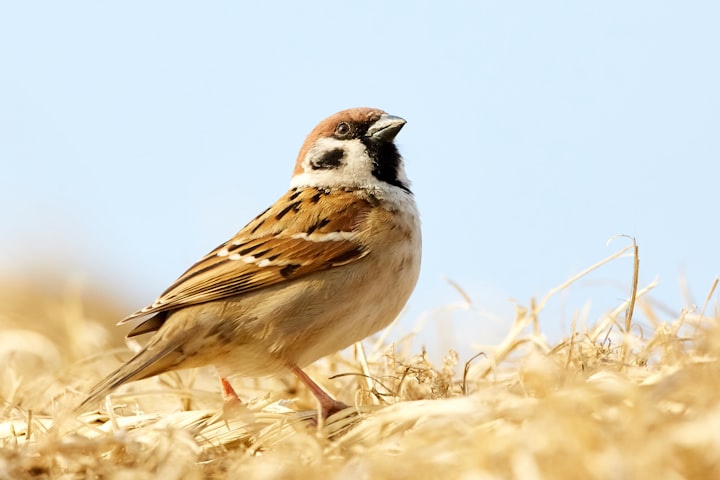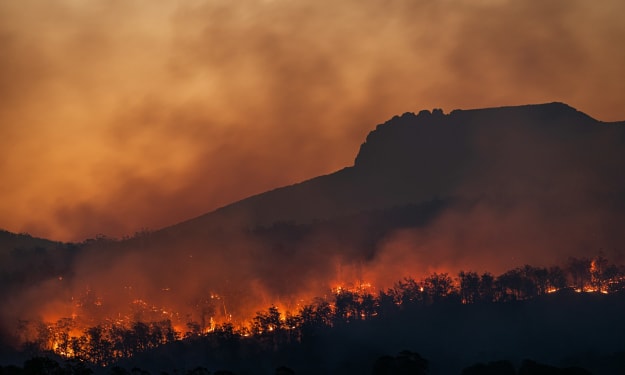The Declining Sparrow Population
Causes and Ways Society Can Help

Introduction
The delightful chirping of sparrows, once a familiar sound in our neighborhoods, is becoming increasingly rare. The declining sparrow population has raised concerns among bird enthusiasts and conservationists. In this blog, we will explore the reasons behind the decrease in sparrow numbers and discuss various ways in which society can contribute to their preservation. By understanding the causes and taking proactive steps, we can ensure the survival of these beloved birds and maintain the ecological balance they bring to our environment.
1. Habitat Loss and Urbanization
One of the primary factors contributing to the decline of sparrow populations is the loss of their natural habitats. Rapid urbanization and the expansion of concrete jungles have encroached upon the natural nesting sites and food sources of sparrows. The destruction of green spaces, shrubs, and grasslands deprives these birds of the necessary shelter and foraging opportunities. Additionally, the increase in sealed buildings and the absence of suitable nesting sites in urban areas limit their ability to reproduce.
To address this issue, society can play a significant role in creating bird-friendly habitats for sparrows. Individuals and communities can plant native trees, shrubs, and flowers that provide food sources and nesting sites. Maintaining green spaces and avoiding the use of pesticides and herbicides in gardens can encourage the presence of insects and seeds that sparrows rely on for sustenance.
2. Changes in Agricultural Practices
Modern agricultural practices have unintentionally impacted sparrows. The use of chemical pesticides and herbicides reduces the availability of insects and seeds, which are crucial food sources for sparrows. Additionally, the loss of traditional farming methods, such as mixed cropping and leaving stubble fields, has deprived sparrows of nesting sites and winter food sources.
Promoting sustainable agricultural practices is crucial in protecting sparrows. Encouraging farmers to adopt integrated pest management techniques that reduce chemical pesticide use benefits not only sparrows but also the overall ecosystem. Supporting crop diversification and preserving natural habitats within agricultural landscapes can provide sparrows with abundant food sources and nesting opportunities.
3. Lack of Nesting Sites
Sparrows are cavity-nesting birds that rely on nooks and crannies in buildings and trees for nesting. However, the increasing use of concrete structures, sealed buildings, and the absence of suitable nesting sites in urban areas have limited their ability to reproduce. The scarcity of safe and accessible nesting sites further contributes to their declining population.
Building owners and homeowners can contribute to sparrow conservation by providing nesting sites. Simple measures like installing nest boxes or leaving gaps in the eaves and walls of buildings can offer sparrows safe and suitable places to build their nests. By incorporating sparrow-friendly architecture in urban development plans, we can ensure their nesting requirements are considered.
4. Reduced Food Availability
Sparrows primarily feed on seeds, grains, and insects. However, the widespread use of chemical pesticides in agriculture has resulted in a decline in insect populations, reducing a vital food source for sparrows. Furthermore, the prevalence of mono-crop agriculture limits the availability of diverse seeds and grains, negatively impacting the feeding habits and survival of sparrows.
To address this issue, society can support sustainable farming practices that prioritize the preservation of insect populations and diverse plant species. Promoting organic farming methods and advocating for crop diversity can restore the availability of food sources for sparrows.
5. Pollution and Climate Change
Environmental pollution poses a threat to the health and well-being of sparrows. Increased pollution levels can affect their reproductive success, weaken their immune systems, and impact their overall survival. Additionally, the changing climate patterns disrupt nesting and migration cycles, further endangering the sparrow population.
Society can contribute to sparrow conservation by reducing pollution levels. Promoting cleaner energy sources, practicing responsible waste management, and supporting policies that aim to reduce pollution can create a healthier environment for sparrows and other wildlife. Additionally, addressing climate change through efforts such as reducing carbon emissions and supporting conservation initiatives can help mitigate the impacts of climate change on sparrows.
6. Importance of Sparrows
The decline in sparrow populations is more than just a loss of a charming bird species. Sparrows play a vital ecological role by controlling insect populations, aiding in pollination, and serving as indicators of environmental health. Their presence in urban areas also contributes to a sense of biodiversity and harmony with nature.
Conclusion
The declining sparrow population is a cause for concern, highlighting the urgent need for conservation efforts. Protecting the habitats of sparrows, creating suitable nesting sites, promoting sustainable agricultural practices, reducing pollution, and addressing climate change are key steps towards preserving these beloved birds. Individual actions, such as providing bird-friendly environments in our gardens, reducing pesticide use, and raising awareness about the importance of sparrows, can collectively make a significant impact on their survival. Let us come together to safeguard the future of sparrows and ensure that their melodious chirps continue to resonate in our lives for generations to come.
Keep Walking!
Thank you for taking the time to read my story. If you enjoyed it, please leave a like. If you wish to say few words, please leave a comment! 😊
About the Creator
Keep Walking Lad!
I create blogs related to motivation, career, lifestyle, finances & simple living tips to inspire and empower you. Explore easy-to-understand articles for a better life.
Keep Walking!






Comments
There are no comments for this story
Be the first to respond and start the conversation.